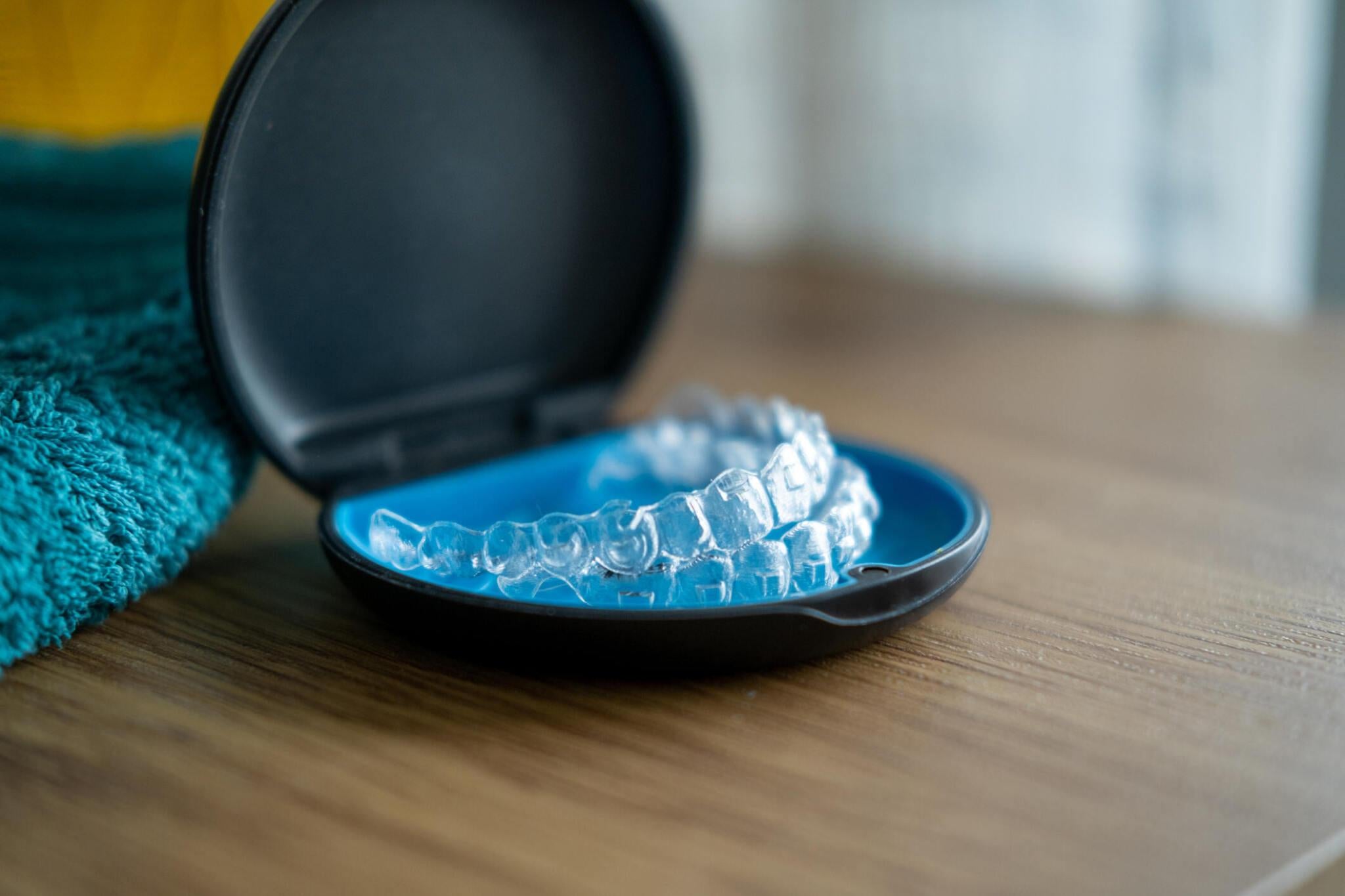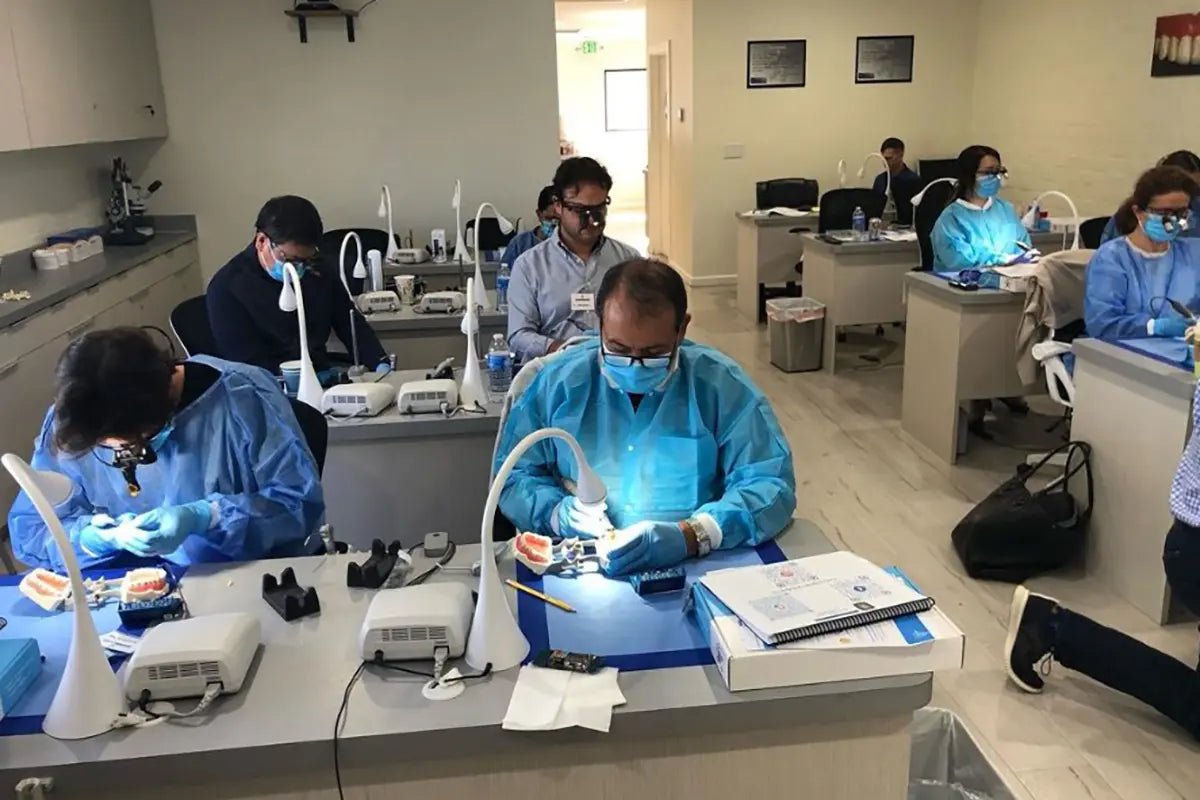How to Clean Invisalign Aligners
(Do’s and Don'ts)

Brushing your teeth without cleaning your Invisalign aligners is like wearing the same dirty clothes after showering.
You want to avoid getting used to it, or else your clear aligners can become a breeding ground for all sorts of bacteria.
What happens if you leave those bacteria hanging around your Invisalign clear braces?
It might cause foul breath or an increased chance of dental caries.
That being said, here are some tips to help you clean and maintain your aligners. And if you still need to get Invisalign trays but plan to do so, here's a heads-up for you.
Invisalign cleaning: Beyond oral hygiene
There's a world of additional benefits to cleaning your Invisalign aligners beyond maintaining proper oral hygiene. These benefits include:
Enhanced effectiveness
When aligners are free from bacteria or debris, they can fit snugly and comfortably, exerting the right amount of pressure on your teeth and moving them to their desired positions. It means faster progress and predictable results, saving you treatment time while maintaining comfort.
Maintained aesthetics
Invisalign clear braces are like transparent windows to your pearly white teeth. Food particles stuck on your invisible aligners may cause stains and discoloration.
By cleaning your aligners, you can wear them confidently, knowing your breath stays fresh and your clear braces remain virtually debris-free.
Protection against cavities and gum disease
Studies show that having braces or other orthodontic appliances can significantly alter the composition and amount of oral biofilms in the mouth.
If not correctly maintained, wearing braces or orthodontic appliances can cause problems like cavities or gum issues, affecting your daily life.
Practicing good oral hygiene and consistent cleaning routines protects your teeth and gums from potential long-term oral health issues.
Also, by eliminating bacterial build-up, you reduce the chances of bad breath and maintain a pleasant taste in your mouth throughout the day.
Saves you time and money.
Invisalign aligners require replacement every 1 to 2 weeks, but a not well-maintained set of trays may suffer damage and are less likely to last longer. Therefore, proper cleaning of your aligners can save you from the hassle and cost of replacing them prematurely.
Indicators of neglected invisible braces
Apparent signs of a neglected set of Invisalign trays include sudden discoloration, with pale and yellowish hues indicating bacterial staining or bacteria-induced discoloration.
This neglect can also lead to a funky breath, resembling the smell of an intense and unwashed gym bag lingering in your mouth.
You should thoroughly clean your clear aligners when these signs become more evident. If the stains lingered and the aligners have become irreversibly discolored, replacing them might be the only solution.
Nevertheless, you could prevent these events if you start following these cleaning methods.
How to clean Invisalign trays (Best Practices)
While rinsing your Invisalign aligners may help wash out visible food debris, it will not fully address the bacteria build-up.
Just like what you do when brushing and flossing your teeth, maintaining your aligners requires establishing a strict daily cleaning routine.
Typically, you clean your aligners when you remove them in the morning and before bedtime, ensuring they are ready to be worn throughout the night.
Here are the basic cleansing methods recommended for daily and nightly cleaning:
Morning and evening cleaning routine
Step 1: Remove your aligners and set them aside upon waking up.
Step 2: Brush your teeth thoroughly using a soft-bristled toothbrush and toothpaste, ensuring you clean all surfaces.
Step 3: Give your aligners a good rinse under lukewarm water to remove debris or saliva.
Step 4: Gently brush your aligners with a soft toothbrush for at least five to seven minutes.
Step 5: Rinse your aligners again under lukewarm water to wash away any residue.
Step 6: Reinsert your clean aligners into your mouth, ensuring a proper fit for continued teeth repositioning throughout the day.
Step 7: Perform your Invisalign morning cleaning routine again each night before bedtime. Remember the importance of having a reliable protective case to keep your Invisalign aligners whenever not in use.
The Invisalign aligner cases are made from medical-grade thermoplastic materials, which protect your aligners from moisture and bacteria.

In most cases, your Invisalign provider or dentist will give you two instances: one for your current aligners and another for your last set.
On such occasions where you might lose or break both of your cases, you must visit your orthodontist immediately to get new ones so your aligners are protected.
Aside from the specialized case, your Invisalign Starter Kit includes a travel pouch, sachets of Invisalign cleaning crystals, a welcome brochure, and care instructions.
Soak your aligners in cleaning crystals for 15 minutes for optimal cleaning results, then rinse and store them in the container provided. Follow the labeled numbers on the packages to progress through each stage correctly.

Addressing common questions about Invisalign cleaning
Following the manufacturer's or orthodontist's instructions is always the best and safest way to clean your Invisalign aligners. Typically, that entails doing everything that has been discussed above.
But with the ubiquity of online resources offering mixed instructions and guidance on Invisalign maintenance, it's sometimes tempting to do things independently without consulting your orthodontist.
So, let’s clarify things once and for all.
Can I put my aligners in hydrogen peroxide?
Yes. But with the right concentration.
The medical industry requires certain sterilization levels for all equipment to limit the transmission of contaminants in medical products, including dental appliances.
One of the most common chemicals used in sterilizing
Hydrogen peroxide possesses oxidizing solid properties, enabling it to remove contaminants from a material effectively.
Combine ½ cup of warm water, with an equal amount of peroxide to effectively clean your aligners using hydrogen peroxide. Soak your aligners in the mixture for 10 to 20 minutes, then thoroughly rinse them under running water.
Can I soak my aligners in vinegar?
Yes. But only with distilled white vinegar. Other types of vinegar will stain your braces.
Distilled white vinegar contains 5% acetic acid, enough to kill or reduce certain types of bacteria such as Escherichia coli (E. coli), Salmonella, and Listeria monocytogenes.
For cleaning, white distilled vinegar can be a great alternative. Its acetic compound can dissolve dirt, debris, and grime.
If you have some distilled white vinegar at home, you can make a cleaning solution by mixing 50% vinegar with 50% water.
Afterward, place your Invisalign in this solution for about fifteen minutes. This gives the vinegar enough time to break down the plaque on the aligners, making it easier to brush it away with a toothbrush later.
Can I brush my Invisalign with regular toothpaste?
It’s a huge no-no! “Some” toothpaste can be so abrasive that it can scratch your plastic aligners.
Abrasive substances such as aluminum oxide, calcium pyrophosphate, and silica are common compounds in toothpaste. They typically constitute around 20-40% of the total toothpaste ingredients.
If you've been using your household toothpaste as a cleaning solution, determine if it is abrasive by checking its position on the Relative Dentin Abrasivity (RDA) scale. A higher ranking indicates greater abrasiveness.
Regardless of toothpaste's abrasiveness level, other recommended cleaning materials may be available.
Is it okay to wash Invisalign with soap?
Although it may not be the best option, a soft, clear liquid soap can clean or rinse your Invisalign aligner. Avoid using scented, colored soaps, which may stain your invisible braces.
Remember to thoroughly rinse your aligner several times to remove all the soap before putting it back in your mouth. Antibacterial soaps can be abrasive and harm your enamel, potentially causing tooth sensitivity and other dental problems.
Is it okay to clean Invisalign with mouthwash?
While most mouthwash products don't contain abrasive properties like toothpaste, using them as a cleaning solution for Invisalign trays isn't advised.
Most mouthwashes contain at least 18-26% alcohol, specifically ethanol. According to experts, ethanol may cause TPU products such as Invisalign to swell slightly. If this happens, your trays might not fit well with your teeth, thus, compromising your orthodontic treatment.
Additionally, soaking your invisible aligners in mouthwash may change their color, giving the impression that you've recently eaten a sweet treat.
Consult an orthodontist in Culver City
Following strict daily cleaning methods and using the appropriate cleaning solutions will always keep your aligners clean and in top condition. Not only that, keeping your trays in tip-top shape makes your Invisalign treatment all worth it.
Most importantly, seeking advice from a certified Invisalign provider will save you from prematurely replacing your aligners or damaging your teeth due to bacteria-induced cavities.
If you're looking for an orthodontist with the proper knowledge and experience in Invisalign braces, reach us at United Dental Care in Culver City, California.
So, book a free consultation now to take the first step towards a better smile.




 By:
By: 

